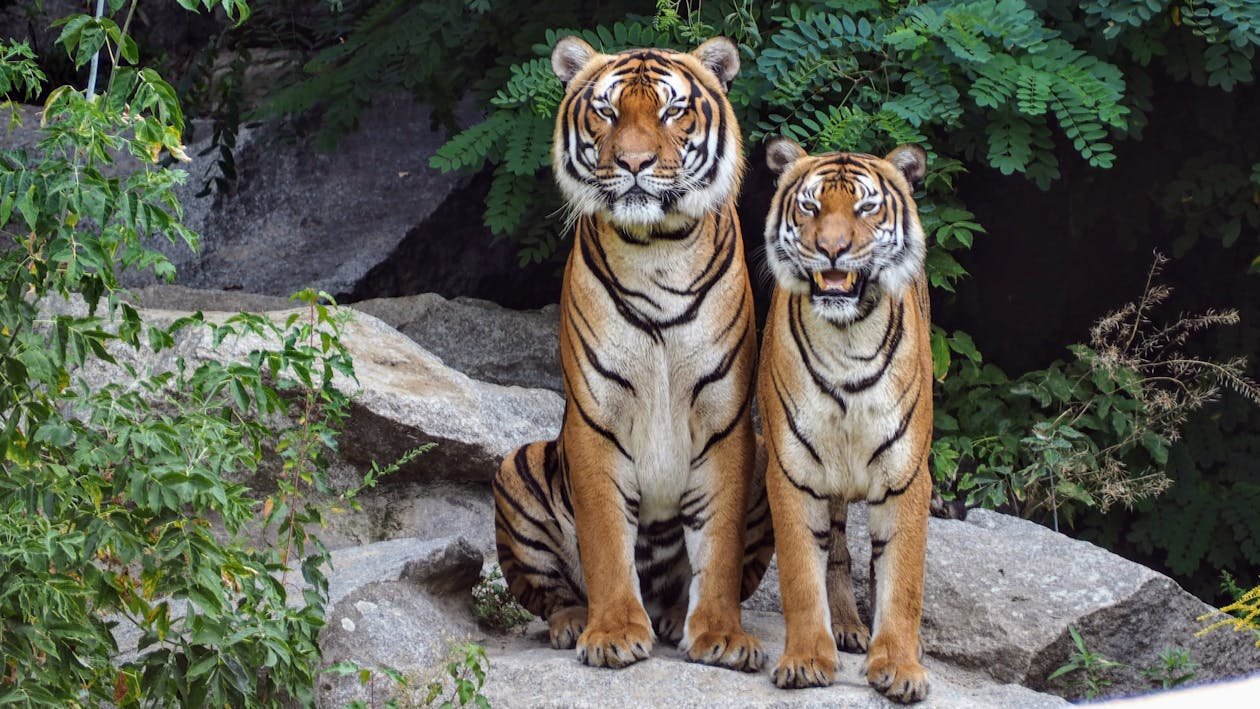Tigers, with their striking orange coats and bold black stripes, are one of the most recognizable animals in the world. Yet, despite their vivid appearance, tigers are masters of camouflage in the wild. This paradox raises an interesting question: how do such brightly colored animals blend seamlessly into their environment? Let’s explore the fascinating science behind the stripes and how these majestic predators use them to their advantage.
1. The Purpose of the Stripes
- Breaking Up the Outline
Tigers’ stripes serve to break up the outline of their body, making it harder for prey to detect their true shape. The contrasting colors create a form of “disruptive coloration,” a technique often used by animals to hide in plain sight. Instead of seeing the clear silhouette of a tiger, prey animals see a fragmented image that blends into the surroundings. - Mimicking Natural Shadows
In the dense forests and grasslands where tigers live, light often filters through trees and plants, casting irregular shadows. The tiger’s black stripes mimic these natural patterns, helping them blend into the shadowy environment. This allows them to move through the jungle undetected by both prey and potential threats.
2. How the Environment Affects Camouflage
- Jungle and Grassland Habitats
Tigers predominantly live in two types of environments: jungles and tall grasslands. In these areas, the orange color of the tiger’s fur is not as obvious as one might think. The dense foliage of jungles casts shadows that make the bright orange less visible, while the long, golden grasses of grasslands during dry seasons blend well with their fur. - The Role of Dappled Light
The dappled light that filters through the leaves and branches in a forest is a key element in tiger camouflage. The alternating patches of light and shadow on the forest floor match the tiger’s striped pattern, further hiding them from view as they stalk their prey.
3. The Biology of Tiger Stripes
- Genetic Origin of Stripes
The distinct stripe pattern on each tiger is like a fingerprint, unique to every individual. The genes that control this pattern are a result of evolutionary adaptation. These patterns have evolved to provide the perfect balance between stealth and identity, making tigers effective hunters. - Camouflage in Different Species of Tigers
The different subspecies of tigers, such as the Bengal, Siberian, and Sumatran tigers, all have slightly different stripe patterns. For instance, Sumatran tigers have denser stripes, which are more effective in their dense jungle habitat. Siberian tigers, living in snowy environments, have paler coats that help them blend into their snowy surroundings.
4. Predatory Advantage
- Ambush Predators
Tigers rely on stealth and ambush to hunt. Their stripes allow them to get close to prey undetected, giving them a significant advantage. By blending into the background, they can lie in wait or silently approach within striking distance before launching their powerful attack. - Prey Perception
Many of the animals tigers prey on, such as deer and wild boar, have poor color vision. This means they may not even notice the bright orange color that is so obvious to humans. To them, the tiger’s stripes might just look like the natural play of light and shadow in their environment, further aiding in the tiger’s ability to remain hidden.
Conclusion
The tiger’s stripes are not just a matter of beauty; they are an evolutionary marvel designed for survival. By breaking up their outline, mimicking shadows, and blending into their environment, tigers use their stripes as a powerful tool for camouflage. This allows them to move silently through their habitats and strike with deadly precision. The next time you see a tiger, remember that behind those mesmerizing stripes lies the science of survival in the wild.

